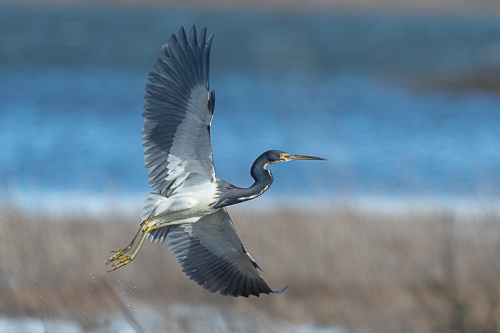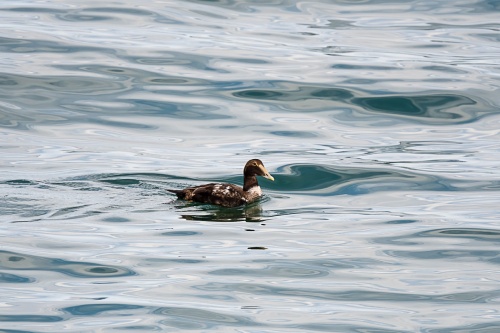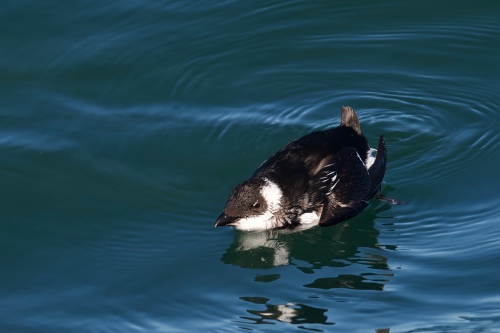By Jesse Anderson
For any adventure – no matter the weather or bird activity, or unforeseen circumstances – great company often makes for a great story. As we barrel through the calendar year, endlessly filling our backyard feeders, installing native plants…waiting for a time when we can again re-group to enjoy birds together. For now I thought I’d share our story.
Leading my first winter trip with Forsyth Audubon, there was a natural drive to do things a bit differently – change some things up to make it fun and interesting, considering we have been traveling as an organization to the Outer Banks for a long while now. I was interested in sharing a “seldom-visited” birding hotspot, which I have grown to love, Lake Phelps, AKA Pettigrew State Park. At a whopping 16,600 acres, Lake Phelps is North Carolina’s second largest natural lake. As we arrived at Pettigrew State Park, driving through six or more inches of water and winds howling, we all secretly knew birding was going to be tough. While waiting for everyone to arrive, a couple of Bald Eagles of various ages flew overhead – maybe there was hope. One thing you can’t ever plan for is weather, and boy did this weather stir things up.

Getting by with a little help from our friends – from getting cold feet along the flooded Bodie Island boardwalk. Photo by Jesse Anderson.
Walking out to the boat ramp, we could see turbulent waters ahead. We were able to view a few hunkered down winter songbirds, but it wasn’t easy. With strong winds blowing, Lake Phelps looked more like a rough ocean than a lake – nothing out on the lake except some whitecaps! In an attempt to salvage the stop, we headed toward the “sheltered” south leeward side of the lake, where the waterfowl were hopefully hiding. Less than halfway there, we encountered downed trees blocking the only road to the access. Enough with this, on to the Outer Banks!
A quick stop for lunch at Sugar Shack Seafood Market, just over the Roanoke Sound as you travel into the Outer Banks. Weather wasn’t only turbulent for the birds, it caused an upwelling in the whole schedule – the road down to Cape Hatteras was completely flooded – as lunch quickly turned into spreading word of overturned UPS trucks and floating Jeep 4×4 vehicles. Luckily, our amazing group was able to overcome by scrambling to re-book accommodations and adapt.
The sheltered marsh of Bodie Island did not disappoint. A visit to the observation deck provided our group with even more diversity and great bonding time. The group enjoyed excellent views of a wide variety of waterfowl and a very cooperative tricolored heron.
A short trip over to the Old Coastguard Station provided good views of some sheltering American Oystercatchers and Red-breasted Mergansers. Walking out to the point quickly reminded us how hard the wind was blowing, considering we soon began being pelted with sand as we crested the edge of the terminal groin.
As we returned, crossing Bonner Bridge, we noticed a few cormorants which had been stranded on top of the bridge, sheltering from the strong winds. Cormorants are the most efficient marine predator in the world, catching more fish per effort than any other animal – where they lack in efficiency is on land – they are clumsy and awkward, often struggling to take flight. In a split-second decision, we decided to stop, with a speed limit of 55 MPH, they were likely to meet an unfortunate fate. Jean Chamberlain [wildlife rehabilitator extraordinaire] and I [mere mortal], got to work catching these two birds to help them see another day. Jean showed her true expertise as she approached, quickly captured, and released the cormorant that was staying still. I went after the other, which decided to run awkwardly along Bonner Bridge, with an awkward human (me) chasing behind. Finally, I caught the second bird and both were released to safety.
On the way home, a few of us stopped to observe the tail-end of a (continuing) Common Gallinule in a roadside ditch – woohoo!! Take the win where we can get it!
The following day was a trip to Mackay Island NWR. After contacting the range manager prior to our visit, I was particularly excited about this stop. Upon arrival, however, a different story unfolded. Apparently because of federal budget cuts on wildlife refuges, the gates to the range were “closed on the weekend” according to the range manager via phone, something he failed to mention in prior conversation. Even to this day, scouring their website, I find that the range is “Open Sunrise to Sunset.” Our great group of Forsyth Audubon members would adapt and enjoy what portion we could! One of the main targets was the all-elusive King Rail. Many were heard, yet they stayed true to their modus-operandi.
Just before lunch, we received notifications that the King Eider had been relocated off Jeanette’s Pier. We made a quick decision to enjoy our bag lunch on the next ferry and head straight back to Nags Head to do some seawatching.
Upon arrival at Jeanette’s Pier, a number of other birders were already observing a pair of King Eider. The views were distant, but distinguishable, and it was enjoyable to compare both King and Common Eider at the same site! In addition to the eider, we enjoyed viewing a number of ducks, Manx Shearwater, and a few Razorbills.

Forsyth Audubon members enjoying the challenge of viewing a flyby Manx Shearwater. Photo by Jesse Anderson.
After we got our fix of seawatching, we collectively decided to explore Pea Island NWR, a favorite local hotspot. A few stops within the refuge provided just the amazing addition to bird diversity the group was looking for. Made for a great end to day two.
Our third day was a long-awaited journey into offshore waters on the Stormy Petrel II, a boat operated by Brian Patteson and Kate Sutherland. Pelagic trips are possibly one of my favorite things to do while at the coast, mainly because it brings you away from human development into a whole new world, one not often seen from shore.
Throughout the day, both bird life and marine life did not disappoint. Just as we were heading into Oregon Inlet, I noticed a small dark bird on the water from mid-way down the starboard side and ran to the front yelling ‘alcid!’ As we barreled ahead, the bird dove just under the bow. The tiny bird ended up being our first, and only Dovekie of the trip – and what wonderful views we had.
The Dovekie hung around the boat for quite a while, seemingly in an attempt to catch its breath and avoid becoming a meal of a nearby Great Black-backed Gull. Additional bird highlights included thousands of Northern Gannet, a number of Razorbill, and a great diversity of gulls of all ages.

A non-feathered highlight and the amazing reason pelagic trips are so much fun – you never know what you’ll encounter! Common Thresher Shark (Alopias vulpinus) full breaching from the water was a top highlight for me! Photo by Jesse Anderson.
After spending the final morning exploring Alligator River NWR, we all slowly trickled back toward Forsyth County, many with photos to share and stories that would last a lifetime. Looking forward to again enjoying the company of fellow like-minded bird (and nature) enthusiasts. Hope you are all having a great summer!






